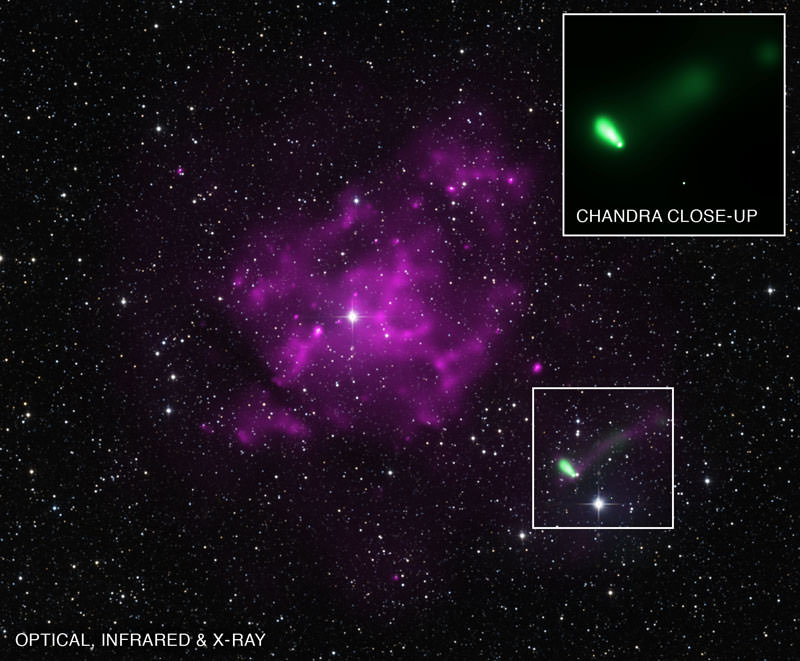A pulsar may have been spotted racing through space at over 6 million miles per hour (9.65 million km/h), setting a new speed record for these curious cosmic objects. If observations are what they appear to be, astronomers will have to recalculate the incredible forces created by supernova explosions.
Seen in observations made with 3 different telescopes — NASA’s Chandra X-ray Observatory, ESA’s XMM-Newton, and the Parkes radio telescope in Australia — the x-ray-emitting object IGR J11014-6103 appears to be racing away from the remnants of a supernova in the constellation Carina, 30,000 light-years from Earth.
The comet-shaped object is thought to be a pulsar, the rapidly-spinning, superdense remains of a star. The facts that it’s dim in optical and infrared wavelengths and hasn’t changed in x-ray brightness between XMM-Newton observations in 2003 and Chandra measurements in 2011 support the claim.
IGR J11014’s comet-like shape may be the result of its breakneck speed through space as its pulsar wind nebula gets blown back by the high-energy bow shock created at the forefront of its passage.
Pulsar wind nebulae are the results of charged particles streaming out from the pulsar itself. The particles, traveling at nearly light-speed, are rapidly decelerated by the interstellar medium and create a visible shock wave. In the case of IGR J11014, the pulsar wind is formed into a “tail” by its bow shock — effectively a sonic boom in front of it.
Further observations will be needed to confirm that IGR J11014 is indeed a pulsar, especially considering that actual pulsations have not yet been detected. If it is a pulsar, and is really traveling at the record-breaking speeds it appears to be — between 5.4 and 6.5 million miles per hour, more than 12 times faster than the Sun travels around the center of the galaxy — a new model of supernova explosions may be required.
Read more on the Chandra news release here.
Image: X-ray: NASA/CXC/UC Berkeley/J.Tomsick et al & ESA/XMM-Newton, Optical: DSS; IR: 2MASS/UMass/IPAC-Caltech/NASA/NSF. Video: NASA/CXC/A. Hobart.

